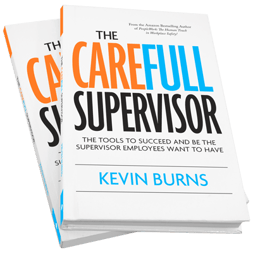A safety leader is someone who influences good decisions and positive behaviors.

Safety leadership has nothing to do with being a manager or supervisor. You don’t have to hold a safety management position to be a safety leader. A safety leader is someone who influences good decisions and positive behaviors. Anyone can do it if they are willing to put the work in. And the benefits are huge: to you and the people you lead.
Here are five ways that you can start to improve your own safety leadership skills right away.
1Recognize what your people are doing right. Bad managers will tell you what you’re doing wrong. There are no interpersonal management skills needed to point out people’s flaws. But, to focus on what’s being done right takes someone interested in building a solid team of good performers. Every championship sports team has a coach that believes in his players. The players believe in their coach. A good coach knows each players’ strengths. The coach is not focused on his player’s shortcomings. The job is to build a team. How many people do you need to raise a barn? How many to tear one down? If you’re going to build something, you need a team. If you’re going to tear something down, it takes just one person.
2Introduce yourself by your first name - not your title. When you extend your hand and introduce yourself by your name, people know that they are not dealing with a position. It’s tough to warm up to people who hold their position over you. I can’t tell you the number of times I have met a CEO but didn’t know it was the CEO. I just thought they were decent people. They were people, not positions. As a safety person, you have to ask yourself what you want to improve? Is it the people you work with or the safety record you’re afraid of being judged for? If it’s people you care for, then you’ll make it all about them. If you’re concerned only about the safety record you’ll be judged by, then it’s all about you. And more people will get hurt. Make it about them.
3Remove the negative reinforcement. Trying to scare people into being safe doesn’t last. A list of what not to do is not helpful. No one goes grocery shopping with a list of things not to buy. Being shown photos of homeless people doesn’t motivate you to invest in your retirement. Photos of fat people don’t sell gym memberships. Get rid of the gruesome photos, the tear-jerking videos and the sad stories of being injured. Stop trying to manipulate people into complying with safety. No one can sustain a daily onslaught of negative marketing for very long. And that’s what it is - negative marketing. It’s the same scare tactics used by politicians to get you to NOT vote for the other guy. Safety is the only department that make employees afraid to fail instead of instilling confidence to be successful. Start finding good reasons and benefits of being safe (hint: none of them include the words, “never,” “don’t” or “not.”)
4Put down the rule book and have a conversation. And not about the rule book. The battle for the hearts and minds of employees in safety is not done by quoting chapter-and-verse from the rule book. People don’t buy-in to the rule book. They tolerate rules. Just because your people may tolerate rules, doesn’t mean they buy-in to safety. To get employees to buy-in, you have to go to the front-lines and engage the enemy: safety apathy. As long as people have no opinion about safety (other than disliking paperwork and rules), they won’t care. That means they won’t buy-in. They will buy-in right after they know much you care … about them. That only becomes evident through one-on-one conversation.
5Be interesting and engaging. The most interesting people you meet are the ones who spend time learning about you. You become interesting the moment you become interested - in them. Treat the person in front of you as the most important person in your life at that moment, and make them feel it. Don’t just present the rules. Make them feel that they matter. They will enforce their own rules on themselves. It makes you more interesting. Besides, safety isn’t boring. Presenters at safety meetings are boring. Good presenters make safety interesting and engaging. It’s easy to buy-in to something that is interesting and engaging. That goes especially for people too.
If you’re in a safety position now or are thinking about it in the future, get to work on developing your safety leadership skills. Do the work. Make the investment. Make a difference.
Kevin Burns is a management consultant, safety speaker and author of "The Perfect Safety Meeting." If you want someone to really drive the safety message home, consider Kevin to speak at your next safety event. He delivers engaging and entertaining keynote safety presentations for everyone: from front-line staff to senior management. He helps people see the light when it comes to buying-in to the safety program.


